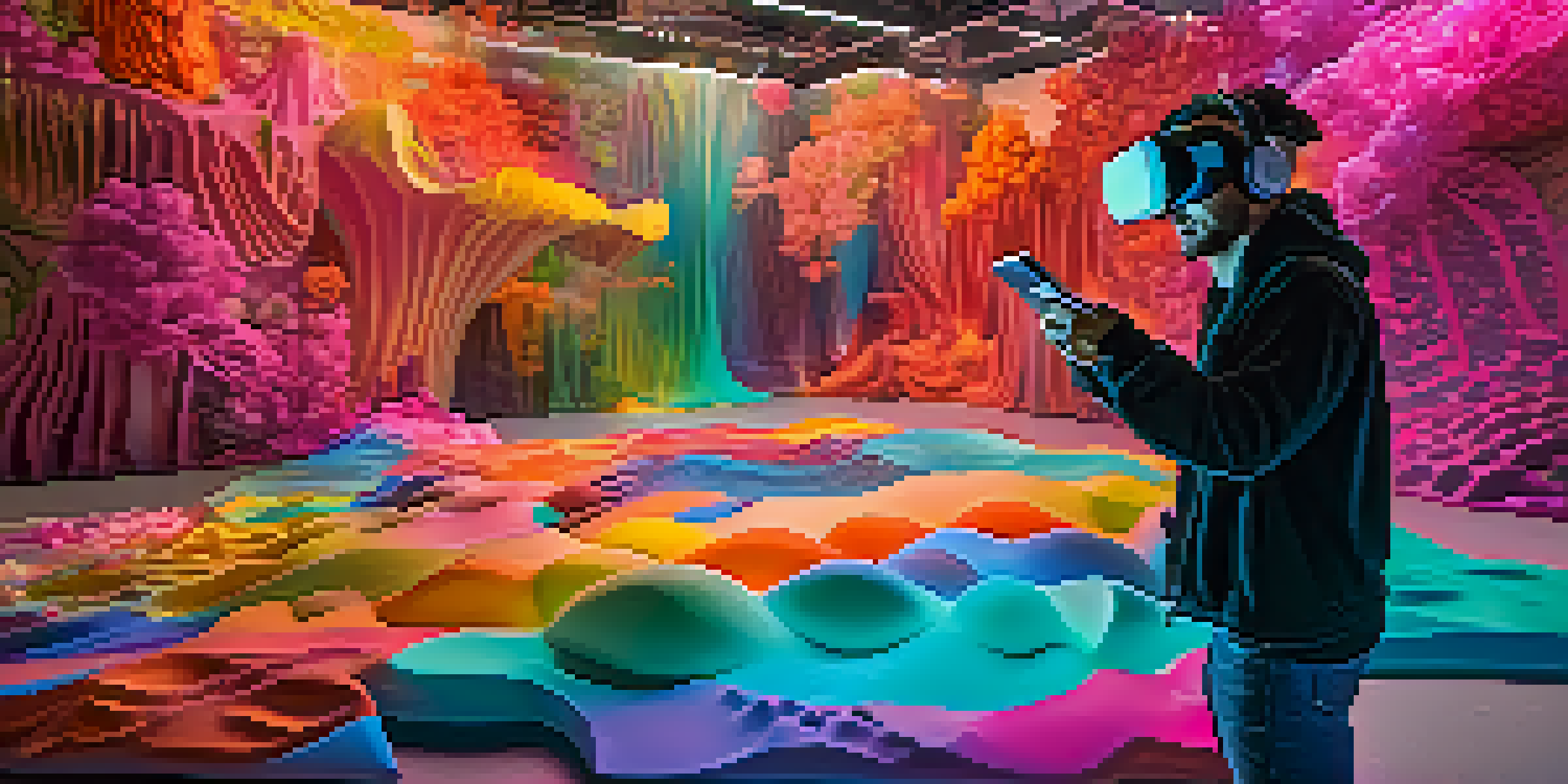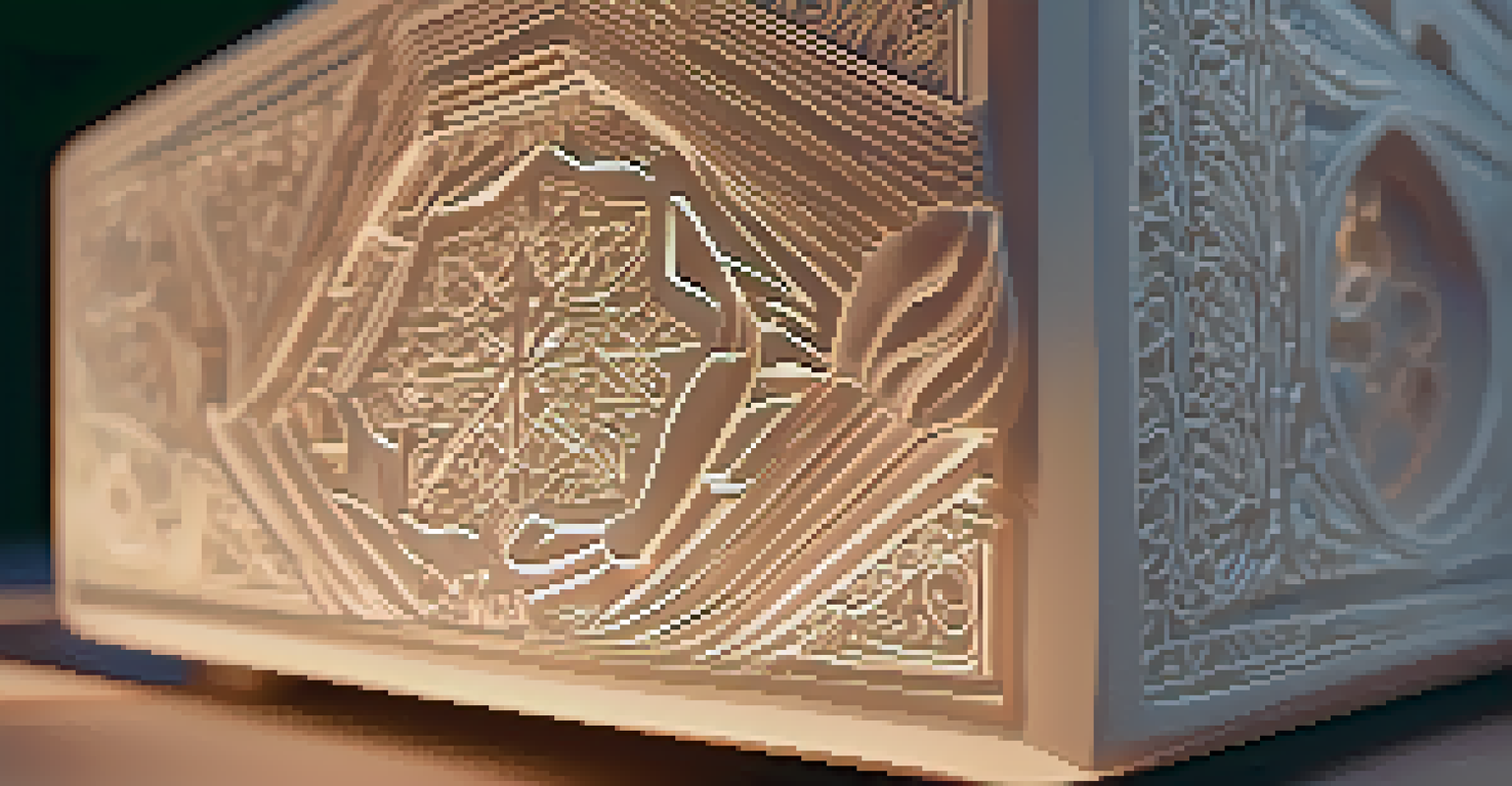Virtual Reality: Immersive Experiences in Carving Art

What is Virtual Reality and Its Role in Art?
Virtual Reality (VR) is an immersive technology that allows users to experience a simulated environment. In the art world, it creates a unique space where artists can interact with their creations in three dimensions. Imagine stepping inside a painting or sculpture—this is the magic that VR brings to carving art.
Art is not what you see, but what you make others see.
By donning a VR headset, artists can manipulate virtual materials as if they were real, offering a fresh perspective on traditional carving techniques. This technology not only enhances creativity but also encourages experimentation without the constraints of physical materials. It’s like having a limitless canvas where the only boundaries are the artist's imagination.
Moreover, VR’s ability to simulate different environments allows artists to visualize their work in various settings. This can provide insights into how light, shadows, and colors interact in a space, which is invaluable for refining their artistic vision.
Benefits of Using VR for Carving Art
One of the most significant advantages of using VR in carving art is the reduction of physical limitations. Traditional carving requires specific tools and materials, but in a virtual space, artists can use a variety of digital tools to create intricate designs. This opens up a world of possibilities for both seasoned carvers and newcomers alike.

In addition to fostering creativity, VR can also enhance the learning process. Artists can practice techniques in a low-stress environment, making mistakes without the fear of wasting materials. This aspect is particularly beneficial for students and hobbyists eager to hone their skills without the pressure of a physical medium.
VR Transforms Artistic Creation
Virtual Reality allows artists to explore new dimensions of creativity, enabling them to manipulate virtual materials and visualize their work in immersive environments.
Furthermore, VR enables artists to share their work in a more engaging way. Virtual galleries allow for immersive exhibitions that can be experienced by anyone, anywhere, breaking down geographical barriers and expanding the audience for carved art.
How VR is Changing the Artistic Process
The artistic process is often a journey of trial and error, and VR has revolutionized this experience. Artists can visualize their projects from all angles before making a single cut, allowing for better planning and execution. This pre-visualization step can save time and reduce frustration during the actual carving process.
The artist is nothing without the gift, but the gift is nothing without work.
Moreover, VR allows for collaboration in ways that weren’t possible before. Artists can work together in a virtual space, regardless of their physical locations. This collaborative aspect can lead to innovative ideas and techniques, blending different styles and perspectives into a single piece of art.
As artists explore this new medium, they are also challenged to rethink their approach to traditional techniques. The merging of digital and physical art forms is prompting a reevaluation of what it means to create, offering new narratives and experiences in the world of carving.
Tools and Software for VR Carving Art
To dive into VR carving, artists need access to specific tools and software designed for this purpose. Programs like Oculus Medium and Tilt Brush are popular among creators, allowing them to sculpt, paint, and design in a virtual environment. Each tool offers unique features that cater to different artistic styles and preferences.
Many of these platforms are designed with user-friendliness in mind, so even those new to VR can quickly learn the ropes. Tutorials and community forums are readily available, making it easier for artists to find support and inspiration as they navigate their new creative space. It’s like having a mentor at your side, guiding you through the intricacies of this innovative medium.
Collaboration and Innovation in Art
By facilitating collaboration across distances, VR encourages artists to blend styles and techniques, leading to innovative and hybrid forms of carving art.
Additionally, advancements in haptic feedback technology are enhancing the VR experience by providing tactile sensations that mimic real-world carving. This feature allows artists to feel the material they are working with, bridging the gap between digital and physical art.
The Future of Art: Integrating VR and Traditional Carving
As VR technology continues to evolve, its integration with traditional carving techniques promises to redefine the art landscape. Artists are beginning to blend physical and virtual methods, creating hybrid pieces that showcase the best of both worlds. Imagine a carving that has been sketched out in VR and then brought to life with traditional tools—this fusion is becoming increasingly popular.
This integration allows artists to push the boundaries of their creativity further, exploring new dimensions in their work. They can experiment with forms and styles that may not be feasible in the physical realm. The result is a rich tapestry of artistic expression that invites viewers to experience art in new and exciting ways.
Moreover, as VR becomes more mainstream, it is likely to attract a broader audience to the world of carving art. People who may not have considered themselves art enthusiasts might find themselves drawn to these innovative creations, sparking new conversations and appreciation for this timeless craft.
Challenges of Implementing VR in Carving Art
Despite its many advantages, implementing VR in carving art does come with its challenges. One significant hurdle is the accessibility of technology. High-quality VR equipment can be expensive, which may deter some artists from exploring this innovative medium. Ensuring that a wide range of artists can access VR tools will be crucial for its growth in the carving community.
Additionally, there’s a learning curve associated with mastering VR software. While many platforms are user-friendly, they still require time and practice to fully understand. Artists accustomed to traditional carving methods may need to shift their mindset and approach, which can be daunting at first.
Challenges of VR in Carving Art
Despite its advantages, the implementation of VR in carving art faces challenges such as technology accessibility, learning curves, and concerns over maintaining authenticity.
Lastly, there is the concern of maintaining the authenticity and emotional connection that comes with traditional carving. While VR offers exciting possibilities, some artists worry that the digital aspect may dilute the personal touch that characterizes handmade art. Striking a balance between innovation and tradition will be essential as the art community navigates this evolving landscape.
Conclusion: Embracing the Future of Carving Art
In conclusion, virtual reality is not just a passing trend; it represents a significant shift in how we approach the art of carving. By embracing this technology, artists can unlock new levels of creativity and expression, while also reaching a global audience. The fusion of digital and physical art forms is creating a vibrant community that thrives on innovation and collaboration.
As more artists experiment with VR, we can expect to see exciting developments in carving art that challenge our perceptions and invite us to engage with art in new ways. The possibilities are endless, and the only limit is the artist's imagination.

Ultimately, the integration of VR into carving art encourages us to celebrate both tradition and innovation. By welcoming this new tool, artists can preserve the essence of their craft while exploring the uncharted territories of the digital realm.